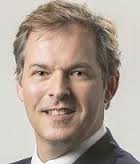Monday, August 4, 2014

By Paul Connolly, Director of Philanthropic Advisory Services, Bessemer Trust
As philanthropic advisors, my colleagues and I are frequently asked by foundations as well as individual donors how they can take their giving to the "next level." Bessemer Trust is a 100 year-old private wealth management firm that supervises over $96 billion in assets for 2200 client families, over $4 billion of which is for private foundations and philanthropic trusts and endowments.
Whatever the situation, my colleagues and I encourage clients who want more "bang for their buck" to consider several ways that they can give "smartly" or more "strategically."
In some instances, we might recommend sharpening the focus of their giving and setting clearer goals, so that instead of having a more diffuse impact in a lot of areas, they have a more meaningful impact on a smaller number of causes.
At the same time, we warn clients about not taking a strategic, metrics-driven approach too far and becoming overly prescriptive and accountability-oriented.
For example, we recently facilitated a board retreat for a foundation client that was grappling with how to strike a balance between quantitative and qualitative assessment. This particular philanthropy focuses on rural development in a developing country. The trustees appreciated receiving detailed data on how the foundation's funding helped improve agricultural productivity and was used to combat poverty, but they also wanted to hear stories about how individual farmers, families, and villages were positively affected. For future board reports, they decided they wanted to be presented "no stories without numbers, and no numbers without stories."
Sometimes we suggest offering a more flexible funding structure to some nonprofits. Too many short-term project-oriented grants and donations with lots of strings attached can hamper a nonprofit's ability to succeed. If a client knows a nonprofit well and trusts its leadership, we may propose that the client provide multiyear operating support that is less restricted, which the nonprofit could then use to build its organizational capacity and cover some of its overhead costs. For example, one client who wanted to enhance health services for low-income individuals arranged it so that half of her funding to a particular nonprofit group went toward providing the direct services themselves, while half supported the organization's general operating expenses.
Finally, we discourage clients from "reinventing the wheel." Over the last hundred years, many funders have tried, succeeded, and failed, and their wisdom should be tapped. We connect clients to more experienced philanthropists willing to share their insights, and we inform them about opportunities to join forces with other grantmakers to achieve common goals.
